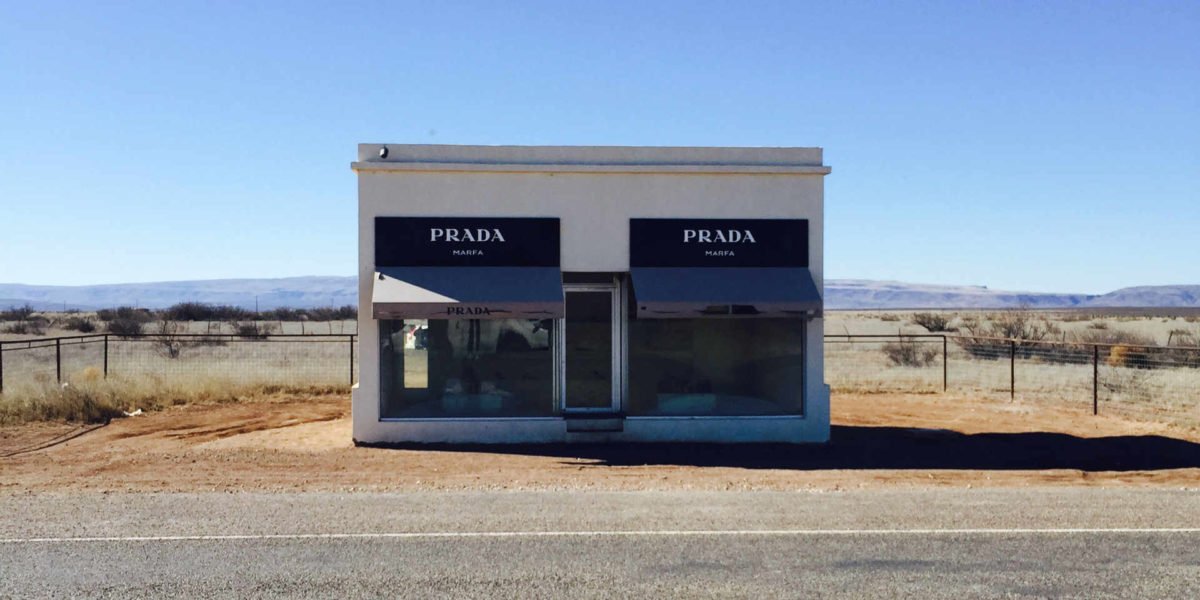
Decoding Marfa
At first, driving down the main road through Marfa, there seemed to be very little to the town, a small, strung out collection of one-story white buildings high on a plateau in far West Texas. But, as we were to find out over the course of our four days there, in Marfa, surfaces give way to surprising depths, but you have look closely.
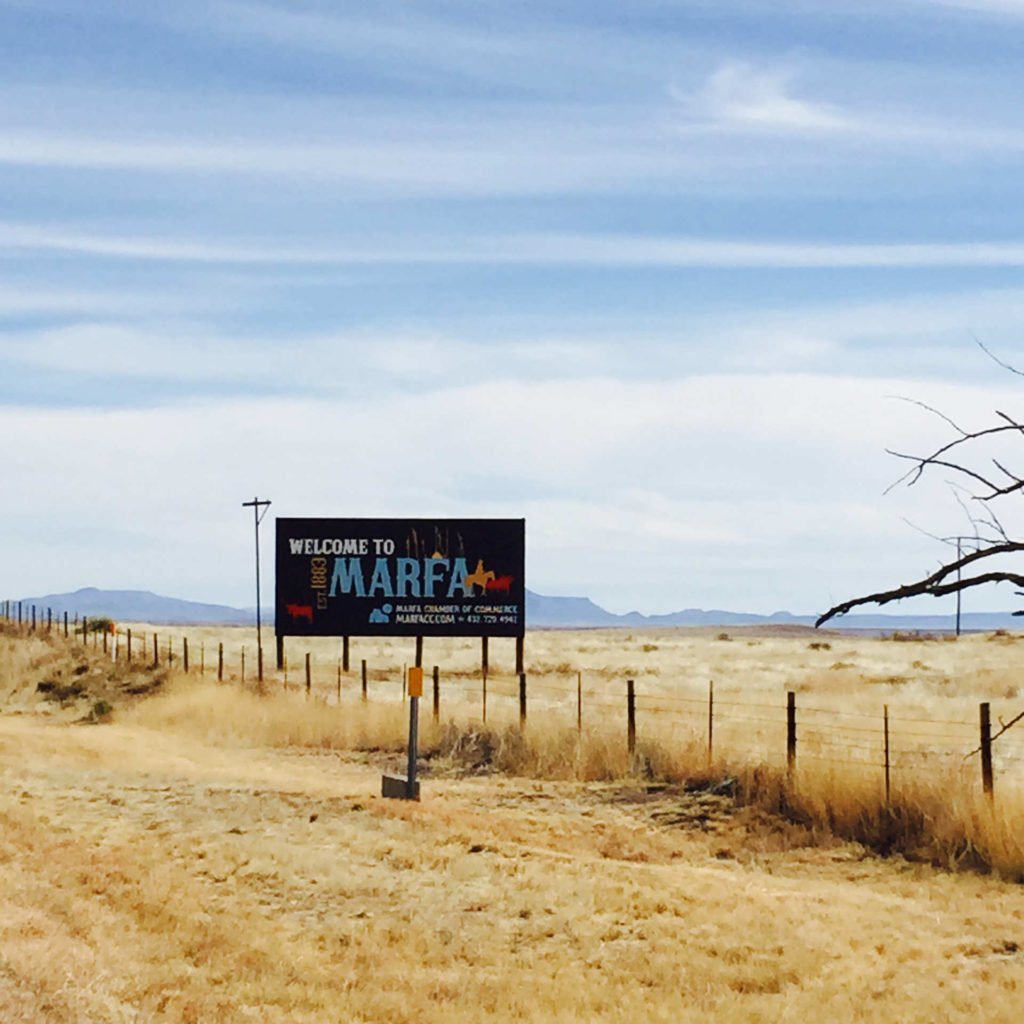
Somewhere in the high desert of the Trans Pecos in far West Texas you’ll find Marfa
There are some obvious pleasures to be had in Marfa, whiling away a few hours drinking bourbon cocktails in the bar of the Paisano Hotel with its laid back frontier charm, or eating some of the best of contemporary American cuisine in Cochineal restaurant for example. But for the rest, some effort is required. We discovered this on our first night in the town when it came to the sticky problem of trying to get some dinner. To be fair, it was New Year’s Eve and to be fair, a rare ice storm had rolled in from the East and caused the whole desert for miles around to freeze over, each cactus and creosote bush now crusted in white ice crystals. The Paisano was full, Cochineal was full, Maiya’s was full. Instead of worrying about it, we put on every layer of clothing we had (it was an almost unheard of minus seven degrees) and headed to the aptly named Lost Horse Saloon at the edge of town.
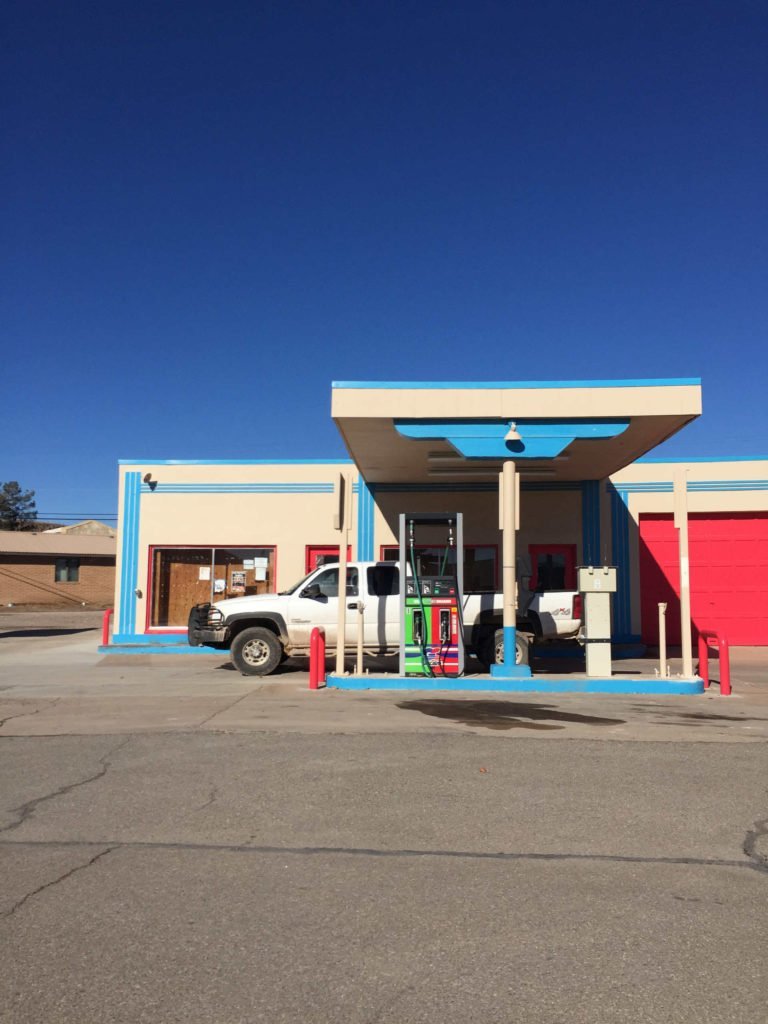
The gas station in Marfa
It was everything I wanted from a Texan bar: dusty broken down piano, longhorn cattle skulls on the wall, a mysterious looking cowboy owner with an eye patch known as Ty. We joined the party out back around the bonfire where a friendly man called Kent explained to me the lay of the land in Marfa: there were locals such as him who came to this bar and there were the hipsters, or the PIBs – People In Black as they are wryly called by Marfa inhabitants, the pilgrims from the LA and New York art scenes who come down to see the Donald Judd installations – who went to Cochineal and El Cosmico, the ultra-cool trailer park and campsite across town. But far from hating one another, the two were more or less settled in relationship of begrudging respect and appreciation. Without places like El Cosmico the town would have just blown away, he told me, and of course you needed the locals for authenticity’s sake, at which point Kent leaned in and whispered to me that there were conflicting reports about which eye Ty wore his patch on.
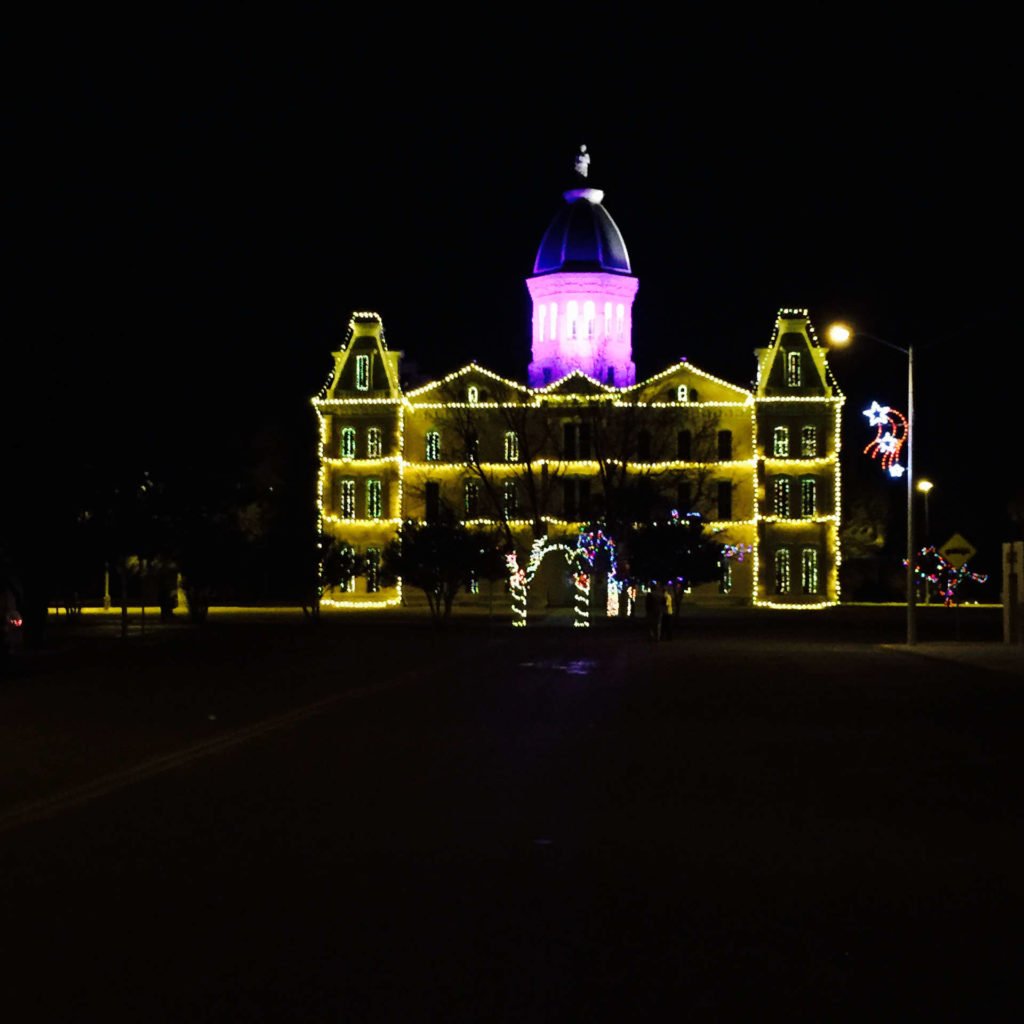
The Presidio Courthouse in Marfa
As we chatted to the mixture of locals and PIBs around the bonfire we got wind that at 8.30pm the cheese parlour was going to open. For how long, nobody knew. We decided that it wasn’t worth risking and headed quickly back towards town. What turned out to be one of the most memorable “restaurants” I have ever been to, also had one of the best names: Museum of Electronic Wonders and Late Night Grilled Cheese Parlour. Inside, the tiny dark room was full of television sets, radios and hi-fis of the variety that were once considered futuristic with round brightly coloured plastic casings, on stalks, etc. but which look faintly ridiculous to us now. Behind a counter sat a baffled looking man, an unlikely chef, who nevertheless took our order for three cheese toasties. We got there just in time – in the next ten minutes half the town it seemed, poured into the tiny room.
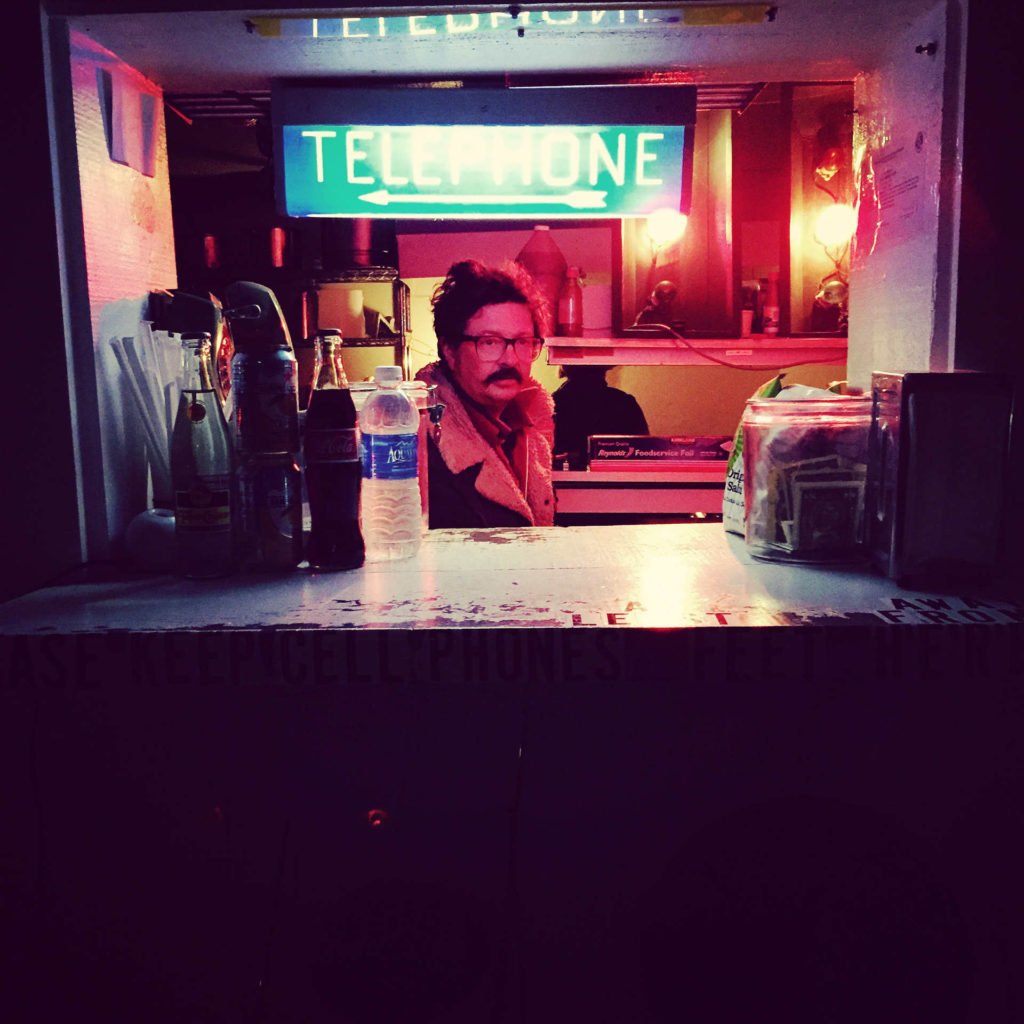
Rush hour at the Museum of Electronic Wonders and Late Night Grilled Cheese
So began our evening that took us next to a concert of proper old time Texan swing at Padres Bar with the locals, then onto El Cosmico for a disco with the PIBs, and finally ended up, after whispers started to circulate the dance floor about an after party, in the town laundrette where everyone converged with bottles of bourbon for a proper old-fashioned rave amongst (and on) the washing machines and dryers.
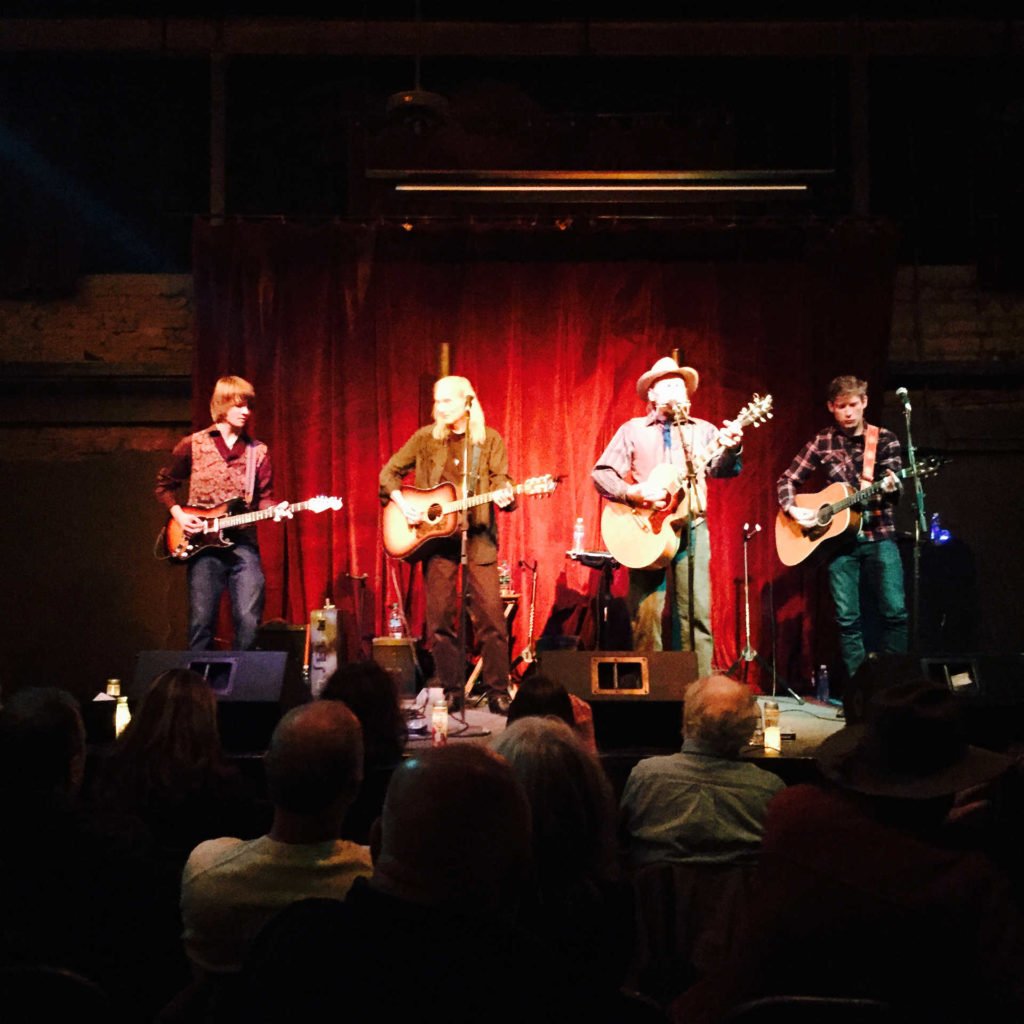
Jimmy Dale Gilmore and Butch Hancock fill Padres on New Years Eve
The next morning, hungover, we needed food, badly. This time we were pointed by the staff at the Thunderbird Motel where we were staying, in the direction of Marfa Burritos. Which turned out to be a woman called Rita serving burritos in her living room. I’d be lying if I said it was the best burrito I’ve ever had, but it was certainly the most welcomed. And so it went: over the next few days we were rescued by a variety of amazingly named eateries – Buns and Roses, Boyz to Men Tacos, Food Shark, Coffee Toast Magic – which seemed to have an incomprehensible rhythm of opening times but were miraculously pointed out to us at the last minute. And of course, by now we were savvy enough to have booked into the Paisano, Cochineal and Mayas for our evenings. During our days we ferreted out Marfa’s art shops, bookstores and galleries. I was sad that the weather never let up enough for us to go and see the legendary Marfa Lights – mysterious balls of coloured lights that hover over the desert out on Route 67.
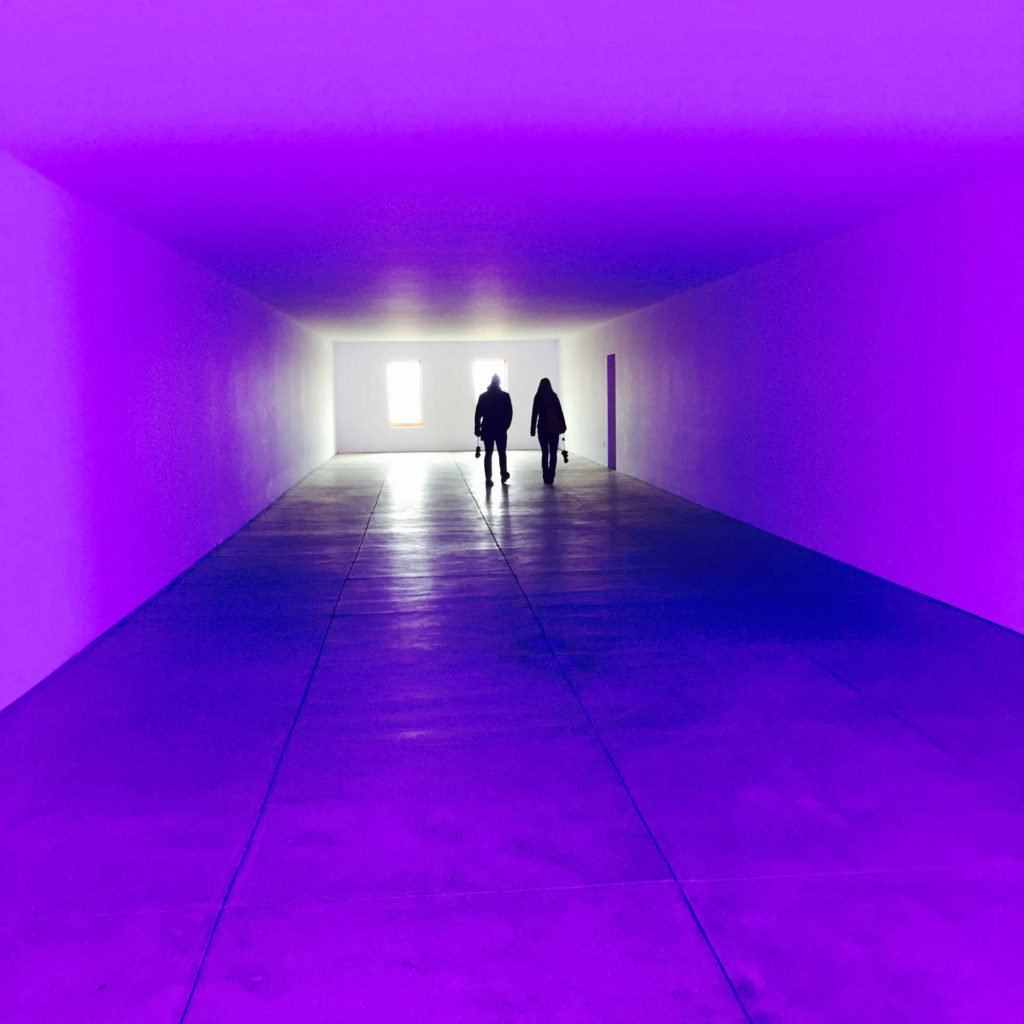
One of the six buildings at the Chinati Foundation that house Dan Flavin’s work
On our last day, in the pouring rain, we went to the Chinati Foundation to see the Donald Judd installations. This was the real reason we were here of course, the reason anyone goes to Marfa. I have to confess I had never heard of Donald Judd before I went to Marfa and had consequently little expectations. I knew he was considered by many to be a minimalist artist – not a type of art I have found much in which to love – and that he believed that the works of art and the space in which they are exhibited should in harmony, which sounded sensible enough. Judd moved to the town in the 1972 and installed 100 aluminium boxes of the same dimensions (41” x 51” x 72”) in huge barns with glass walls in what was a military base on the outside of town. At first, when I entered the enormous space, I felt disappointed. But as I began to walk through the rows of boxes, they started to weave their magic upon me.
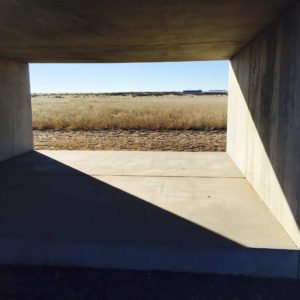
One of 15 untitled works in concrete by Donald Judd
Each box was different, with panels missing or carved up inside by another sheet of metal so that the silver surfaces reflecting the light from the windows were broken up by strips and shapes of darkness where there was nothing there. In them, you could see the dark grey sky, the pale grasses of the field outside and the dark silhouettes of our own bodies walking past. On another day the boxes might have been set ablaze by a setting sun, but for better or worse, our day was all pewter and mercury liquidly reflected in those planes. In a gallery in New York, the boxes might not have done it for me, but in this corner of West Texas, the ambition of Judd’s vision was clear and I found it impossible not to feel moved. It was Judd’s work in the end that really sealed my impression of Marfa as a mysterious and extraordinary place, one which I will never forget.
Combining a visit to Marfa with a trip to Big Bend National Park makes for a great mix of art, the great outdoors and good ‘ol adventure. Get in touch to start planning your own West Texan road trip.
This article was written for All Roads North by Laura Kaye, author and freelance producer at the BBC
